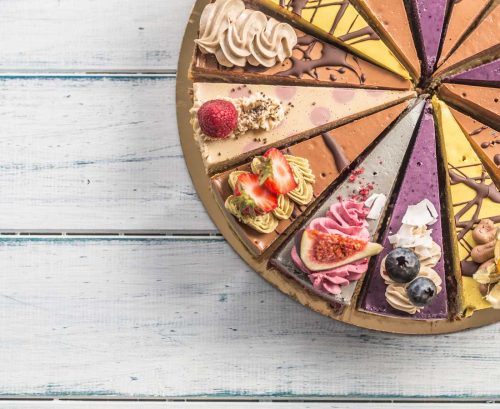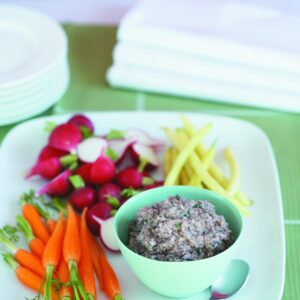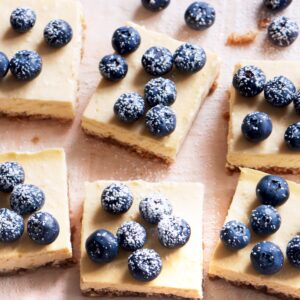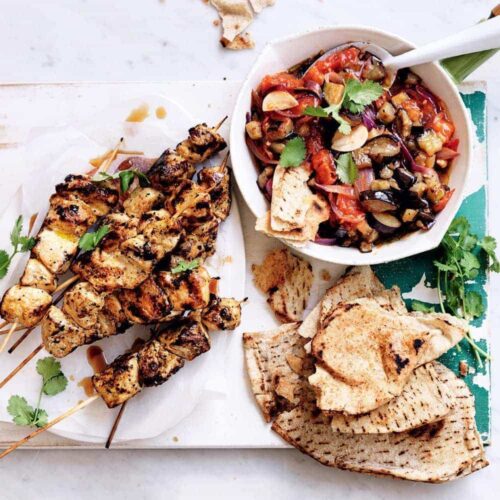
Healthy Food Guide dietitian Melissa Meier takes a look at whether raw treats really are healthier and shows you what to look out for.
Vegan brownies, bliss balls and raw cakes and slices have moved out of vegan cafes and onto supermarket shelves. The impression is they’re lower in sugar and healthier than other packaged snacks — but that’s not always the case.
Check ingredients in raw treats
Raw snacks are often made by blending dried fruit with nuts. Dates, cashews and almonds are frequently the stars, but coconut, seeds, oats, syrups and oils sometimes make the cut too.
You might also notice protein powders, sugar alcohols or other sneaky names for sugar (see list below), and other unfamiliar ingredients — usually a good sign to treat it as as a ‘sometimes food’.
Search for sugar in raw treats
Raw treats can still be high in sugar, even when they claim to be sugar free.
Sugar appears in a variety of disguises — more than 40, in fact! Rice malt syrup, maple syrup and coconut sugar are routinely used in raw desserts and, despite being labelled ‘natural’ or ‘organic’, they’re still sugar.
Even raw treats sweetened with dried fruit, such as dates, end up being calorie-dense, and can have up to 60 per cent sugar content. For this reason, it’s a good idea to approach raw treats just as you would any other treat — to be enjoyed in moderation.
Watch the saturated fat
Some wellness gurus have promoted coconut oil as a ‘clean’ alternative to butter. Unfortunately, there is limited scientific evidence to support its rise as a ‘superfood’.
Coconut oil is high in saturated fat (and energy), and sat fat should be limited to help keep your heart healthy. So, stick to nuts and extra-virgin olive oil as a healthy source of fat in your raw treats.
Be portion wise
Can a slice of raw cheesecake have the same number of kilojoules as a Mars Bar? Yes, it can!
Getting too many calories from regularly eating paleo chocolate brownies or slices of butter cake can lead to unwanted weight gain.
Treats have a place in a healthy, balanced diet, but whether they’re raw or baked, stick to small portions.
Ignore clever marketing claims
Studies show that health buzzwords like ‘gluten free’, ‘keto’ and ‘organic’ make us assume that a food is healthy.
It’s called the ‘health halo’ effect. However, the ingredients list and the nutrition information on the back of the pack are more reliable guides to how healthy any packaged food actually is.
How to make your own raw treats
If you like to get creative in the kitchen, make your own raw treats at home, so you can control exactly what goes into them. All you need is a food processor — and our recipes — for tasty, healthier ideas.
Pros and cons of raw treats
Pros
● High in fibre, thanks to nuts, dried fruit and seeds
● Low in highly refined or processed carbohydrates
● Less sweet than traditional treats, so they can help retrain your taste buds
● Offer an alternative for vegans, or people who need to follow gluten-free or dairy-free diets.
Cons
● High in concentrated sugars from dried fruit and syrups
● Unexpectedly high in energy from coconut oil, nuts and dried fruit
● ‘Health halo’ effect — you eat more because you think it’s good for you
● Often expensive, due to trendy ‘superfood’ ingredients.
Spot the sugar
● glucose
● honey
● caramel
● sucrose
● fructose
● dextrose
● agave syrup
● maple syrup
● rice malt syrup
● coconut sugar
www.healthyfood.com










